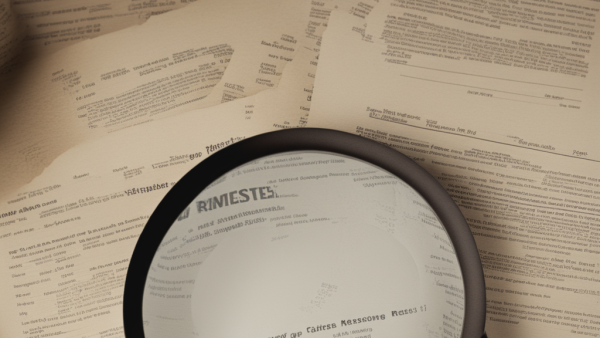
by Sam Franklin | August 07, 2022 | 12 min read
SaaS metrics 101 – All you need to know about churn
Get fundedLast updated: September 02, 2022
Software as a service (SaaS) is a popular business model in the information age. It involves a pay-for-service subscription revenue model with recurring, regularly scheduled payments for continued access to the application.
Churn dominates over all other SaaS metrics because it goes against your SaaS business’s primary objective, growth. While churn might only be a blip on your radar during the early stages of your SaaS business, it can seriously limit growth or your ability to expand your market share as you reach certain levels of growth.
Understanding your business churn is essential to evaluating the strengths and weaknesses of existing processes. It also provides a prime opportunity to improve and learn how to deal with future churn.
Read on to learn about churn rate, how to calculate it, and what it tells you about your business.
Table of contents
- What is churn rate?
- Calculating churn rate
- Ways to calculate churn rate
- What is a good churn rate?
- How often should I calculate my churn rate?
- What churn tells you about your business
- How to reduce churn
- Conclusion
What is churn rate?

Churn rate is the percentage of subscribers or customers who cancel or fail to renew their subscriptions in a given period, like a month or year. It’s natural for customers to come and go as your service grows. Think of your SaaS business as a living, breathing creature that evolves, expands, and contracts over time.
Every company experiences churn, and losing and acquiring customers is a natural part of the business cycle. It’s impossible to hang on to all your customers forever, and they’ll always be customers who cancel their subscriptions for different reasons like cash flow crises, failed payments, or plain unhappiness.
The churn rate is a crucial historical performance measure and is essential when calculating revenue and forecasting growth. When forecasting demand, the churn rate represents the probability of subscribers cancelling their memberships.
Generally, the lower your churn rate, the better. High churn rates mean more customers stop buying from your business, resulting in revenue loss that hurts your bottom line. The churn rate metric can help you understand two things:
1. Customer churn rate
Customer churn, also called customer attrition, is the loss of subscribers for any reason at all. A SaaS business can track churn as a percentage of lost customers compared to the total number of customers in a given period.
The customer churn metric is usually tracked monthly and reported at the end of the month. In most contexts, it occurs when customers:
Cancel a service or subscription
Downgrade a subscription
Leave your business within a given period, usually the last 30 days
2. Revenue churn rate
Revenue churn is the percentage of recurring revenue lost to failed charges, customer downgrades, and cancellations tracked over a specified period. When the period under consideration is 30 days, the revenue churn rate is called monthly recurring revenue (MRR).
Revenue churn from customer cancellations is the value of the contract your company could have benefitted from if the customer renewed. Such losses can occur because:
The customer views your SaaS product as too expensive
The customer changed their business operations and outgrew your product
The customer is not gaining any value from the product
The customer found a more valuable or cheaper version of your product
Revenue churn can also occur when customers pay fewer subscription costs than the previous month by downgrading. Common reasons can include:
Cancelled add-ons because of lack of interest or increased cost
The need to reduce costs
Calculating churn rate

SaaS churn can be challenging to define and measure in practice. There are different ways to calculate the churn rate, and they can be influenced by various factors like:
Complications in counting customers
The overall number of customers in a given period is not a well-defined concept. The number can change during the month because of cancellations or new sign-ups. SaaS businesses can have three kinds of customers in a given month:
Those that sign up before the month and come up for renewal in the current month.
Newly churned customers during the month
New customers during the month
Your churn rate calculation can get distorted if, for example, your new customer sign-ups are larger than your existing customer base. The number for the ‘total number of customers’ will be much different on day one compared to the last day of the month.
New customers churn at higher rates than existing customers, and if your SaaS company is growing, the churn rate will appear higher than it is.
The churn moment is defined differently
Some define the churn moment as when the subscription ends, and renewal doesn’t happen, or it can be at the moment of cancellation. You can argue that customers haven’t churned when they cancel because they’ve already paid until the end of the subscription term.
It’s still possible to win them back before the end of the subscription. By this definition, new customers can’t churn in the first month, and new customer growth can’t distort churn rate calculations.
However, you can also consider the moment of cancellation as a churn to gain the most current churn number possible.
Customer segments churn differently

Specific customers may churn more frequently than others, especially in different subscription plans. Customer churns can be wildly different and easily misinterpreted when taken at face value.
For example, growth in higher churn customer segments can be mistaken for increased overall churn rates and lead you down the wrong path of trying to fix a non-existent problem.
Misleading sample sizes
The calculated churn rate can be a product of the sample size as it represents or predicts how well your service retains customers. You may not have any data about how the cohorts behave over time or the total number of cohorts.
It can result in wild fluctuations that make it challenging to compare churn rates over different periods or samples. Recognising the limitations of any inferences you can draw from churn rates under such conditions is essential.
Seasonality
Churn can be seasonal, and it may change during certain months. If your business varies based on the season, the churn rates can also vary, and it may be challenging to identify such changes if you’ve not been in operation for long.
Ways to calculate churn rate
SaaS data specialists suggest different ways to calculate churn:
1. The simple way
The basic churn rate formula is:
(Lost customers ÷ Total customers at the start of the time period) X 100
For example, if you have 500 customers when the month is starting and only 450 as the month ends, the churn rate can be calculated as follows:
(500-450) ÷ 500 = 0.1 X 100 = 10%
While this formula is simplistic and easy to understand, it has difficulty dealing with significant growth.
2. The adjusted way
In this method, you take the midpoint of the customer count for the month instead of using the value at the beginning of the month to account for significant growth.
Churn rate = Churn ÷ (Total customers on first day + Total customers at the end of time period) / 2
Here the number of churned customers is divided by an adjusted average of the number of customers throughout the period. The approach can deal with the growth issue by normalising changes in how many customers you have over the time window. It provides a more stable basis for your churn rate.
However, the approach does not deal with different periods. Using similar data and calculations can provide different answers for daily churn, weekly churn, monthly churn rate, quarterly churn rate or annual churn rate.
3. By cohort
Calculating churn by analysing your cohort involves determining how many customers you have in a specific period. For example, you can calculate churn according to the number of all customers who purchased your product in July 2022.
Cohort results are helpful because they provide you with numbers not influenced by acquiring new customers. They also allow you to spot patterns in your customer base quickly. Comparing cohorts can help you identify how seasonal trends affect your churn rate.
However, calculating the churn rate by cohorts can get confusing when you have a lot of cohorts.
4. By customer behaviour

You can identify basic patterns related to specific product features through customer churn calculation based on customer behaviour. Maybe customers churn right away after using a particular feature. It can help you dig further to identify the issue and create a suitable solution.
Alternatively, it can help you identify the features that help retain customers and show you where to focus on and improve to promote retention. Essential tools like Google Analytics can help you understand fundamental parts of your business, your customers and their behaviour.
5. By voluntary or involuntary churn
Voluntary churn happens when customers deliberately cancel or downgrade their subscriptions. It can occur because of issues like a bad customer experience, jumping ship to competitors, or poor customer service. It can also be due to changes in their overall needs or budget situation.
Involuntary churn can result from expired or declined payment cards, incorrect payment information, lack of funds, or poor routing of payments. The customer may not even be aware of the issue. Thankfully, you can quickly fix involuntary churn through robust payment processing infrastructures that are smart and flexible.
Why you should simplify the churn rate calculation
Calculating churn rates should not give you a migraine. Make it easy by reducing the complexity, and you’ll gain the following benefits:
Easy understandability – It makes it easy for anyone in your business to understand the numbers. When no one understands the numbers, it becomes challenging to take action.
Comparability – More complexity or cases make it harder to compare churn rate calculations across different periods. A straightforward path can provide you with consistency.
Deep analysis – Simplicity makes it easier to comprehend what your numbers account for and where you need to dig in to learn more. Complex calculations will force you to remind yourself how to calculate the churn rate continuously.
What is a good churn rate?

A reasonable churn rate will depend on your market, and it’s best to consider industry benchmarks internally and externally. You can compare internal churn rates with previous months and against competitors.
Generally, a churn rate from 2% to 8% is considered good or acceptable, especially for SaaS businesses with self-serve solutions. You need to aim for a lower churn rate to prevent it from significantly impacting your monthly recurring revenue (MRR).
How often should I calculate my churn rate?
You should use a measurement interval close to your SaaS business’s average contract renewal period. Customers don’t churn unless their contracts are up. Choosing a measurement interval close to your average contract renewal period is a safe bet, especially if you have a large and uniform customer population and zero growth.
However, you can improve the accuracy of your SaaS churn rate calculation by choosing a measurement interval where the total churn is small. When churn is too high within measurement intervals, the churn calculation can underestimate the actual rate.
What churn tells you about your business
Churn is a crucial metric for any subscription business that helps you forecast growth and understand the long-term stability of your business. Tracking the metric has profound implications on your business’s sustainability and short-term and long-term performance.
Churn will help you understand your business performance by telling you a lot about the financial health of your business. You can get a solid snapshot of the number of customers leaving your business, the speed at which they’re going, and its impact on your bottom line. You can get a better understanding by relating the churn rate to other subscription metrics.
How does user churn rate affect other SaaS metrics?
Churn is a metric that compounds over time and can affect every area of your business, including:
Monthly Recurring Revenue (MRR)

Customer cancellations directly affect your MRR. Churn MRR provides a quick understanding of how churn impacts your business. It’s a good metric for SaaS businesses with different pricing tiers and customers who pay different amounts where one customer is not worth the same as the next.
Simply looking at cancellations will not show you the impact on the bottom line. Churn rates add meaning to the cancellations by showing you the value you’ll miss out on and helping you discover deficiencies in your service. It can help you find out the weaknesses of specific types of customers.
Perhaps you improved the experience for customers in lower tiers but inadvertently damaged it for higher-paying customers.
Customer Lifetime Value (CLV)
You’ll always spend more money and time attracting a new customer in customer acquisition costs (CAC) than maintaining an existing one. The LTV is the total value of your customer over the entire length of their relationship with your business.
A common mistake new SaaS companies make is focusing too much on acquiring new customers instead of keeping the existing ones. A high churn rate means you’ll invest substantially in attracting new customers to match the ones you’re losing.
How to reduce churn

Your company can suffer long-term if you don’t reduce churn rates. You can implement various strategies to decrease high churn rates:
Understand why customers churn
Knowing what makes a customer leave is the first step to fixing the issue. It can help you learn what to do to prevent other customers from churning for the same reason.
Invest in more supporting resources and training
Customers will leave if they don’t understand your product or are not getting the most out of it. Consider helping customers identify the actual value of your product when onboarding and equip support to manage any issue and guarantee customer satisfaction.
Conclusion
You should view churn as an opportunity to learn and improve. Calculating and analysing churn rates is essential for any SaaS business to help you understand why you’re losing customers, how it impacts your bottom line, and what you can do to prevent it.
Written by

Sam founded his first startup back in 2010 and has since been building startups in the Content Marketing, SEO, eCommerce and SaaS verticals. Sam is a generalist with deep knowledge of lead generation and scaling acquisition and sales.


